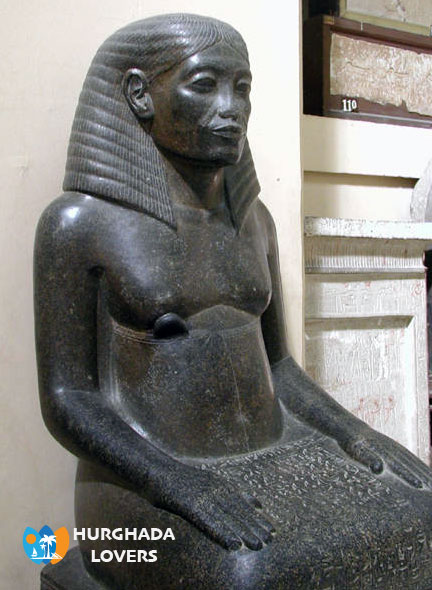Amenhotep, son of Hapu – Egyptian Pharaohs
Historical facts about the architect Amenhotep ibn Habu in the ancient Pharaonic civilization of Egypt, who built the Luxor Temple and the Hypostyle Hall in the Karnak Temple in the city of Luxor, and more secrets of the history of the Pharaonic civilization “Ancient Egypt History“..
Amenhotep, son of Hapu Facts
Engineer Habu, or Amenhotep bin Habu, is an architect and a well-known priest from the ancient Egyptians. Habu, or Habu, held a group of important positions during the reign of King Amenhotep III, the most famous Egyptian Pharaohs kings from the Eighteenth Dynasty of Egypt during The New Kingdom. Learn about another set of information about the engineer Habu. Below.
Engineer Habu was born in the 15th century BC in an area called Atrip, while he died in the 14th century BC..
There is a statue of Amenhotep bin Habu in The Egyptian Museum “Museums in Cairo” in Tahrir Square, and this is evidence of his fame and indicates the development of the art of Sculpture in Ancient Egypt and Architecture in ancient Egypt.
There is a group of inscriptions that describe to us the life of the engineer Habu, like his mother, who was at the end of the reign of King Thutmose III and in the town of Atreb, which is currently Banha..
Habu was born to commoner parents: the father, Habu, and the mother, Itu“.
Habu’s first job was as assistant to the king’s scribe, but after that he became a conscript in the army Military of ancient Egypt.
Habu was organizing and counting the recruits and this was part of the king’s war project.
Habu was given a number of titles that were the jobs he held during his life, including supervisor of priests and clerk of recruits..
Habu titles
He was also called Royal Clerk and Director of the Royal Buildings as well as Deputy Director.
Engineer Habu was also an architect who oversaw important buildings such as funerary Mortuary Temples, such as the one now in western Thebes.
In this temple there is a statue of Memnon, which was also built under the supervision of the engineer.
Amenhotep III rewarded Habu for his works by presenting him with a statue in the temple of the God Amun, the most famous ancient Egyptian god “Egyptian deities” in the Ancient Egyptian religion, which is now located in the Egyptian Museum..
One of the rewards that Habu also obtained was obtaining permission to establish his tomb. Habu chose to build a temple in strange Thebes and carve a tomb in the rocks next to the temple..
Thus, Habu was in a high position like the Pharaohs kings.
It is said that Habu died in the year 31 of the reign of Amenhotep III, as this event was inscribed in the existing tomb of Ra Musa..
After his death, the title of teacher or sage spread to the engineer. In fact, he became a god in the Ptolemaic era “Ptolemaic Kingdom“, and they believed that he was the god of healing.
In the city of Medinet Habu Temple, where his temple is located, there is a group of the most famous historical monuments, including the private temple of King Ramses III, the most famous and well-known king of the Twentieth Egyptian Dynasty during The Ramesside Period.
Therefore, this region has a special sanctity that has continued since the time of the ancient Egyptians until now.
Note: Facts and secrets of the history of the Pharaoh kings will be added soon…
Hurghada Excursions Lovers, Best Travel Agency in Hurghada to provide daily tours to visit the Tourist attractions of Luxor by Hurghada to Luxor Tours and Hurghada to Pyramids Trips. Book online when you come to Hurghada, El Gouna, Sahl Hashish, Makadi Bay, Soma Bay.

